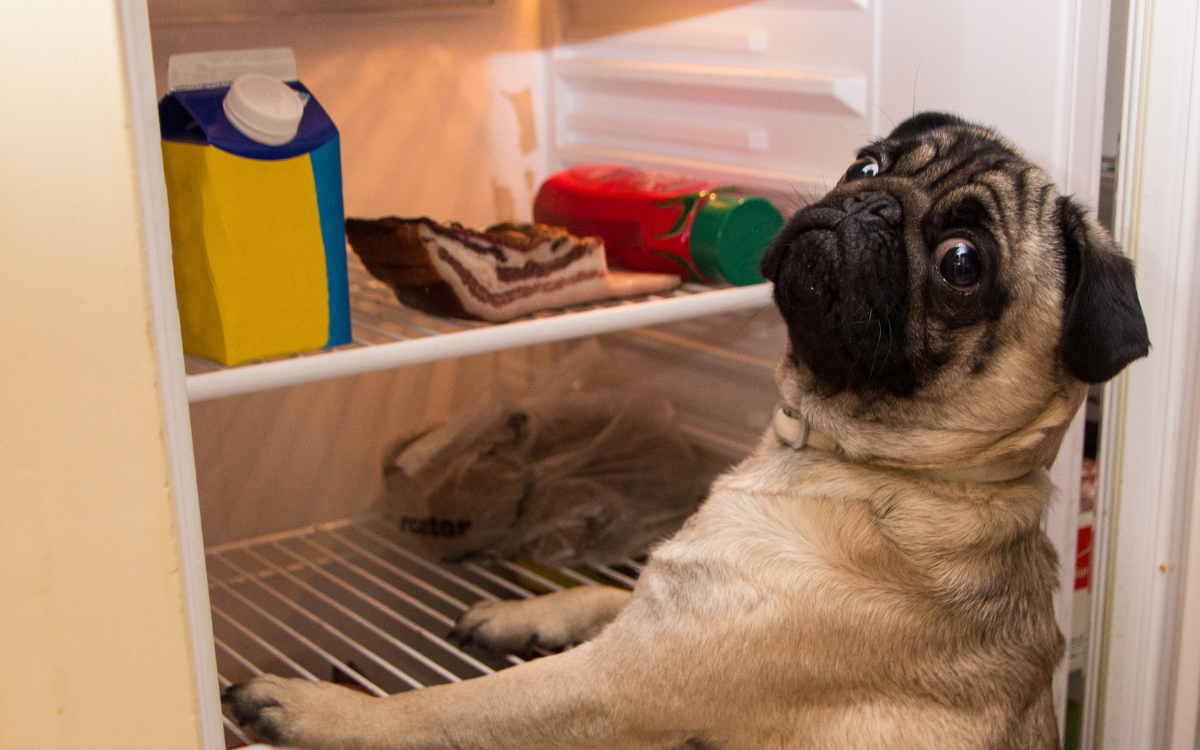Dog parents looking into ideal food options for their four-legged family often come across the topic of raw feeding. The concept of raw feeding has been around likely as long as dogs have been a part of human culture, but has been popularized by the books Give Your Dog a Bone and The BARF Diet, written by Dr. Ian Billinghurst1.
Motivation to switch to a raw diet occurs for a variety of reasons: their dog has become ill, it was recommended by a breeder, trainer, or friend, the desire to feed a wolf-like diet, or failure to find another option that meets their values (organic, locally sourced), to name a few.
Whatever your reason for researching raw, here’s some essential info you should know before making a decision.
What Is Raw Dog Food?
Put simply, raw pet food contains animal tissue that has not been cooked2, usually muscle, bone, or organ tissue in any combination. There are 3 ways to feed this diet: home prepared, commercial, or a combination of both.

Home prepared involves feeding your dog raw animal tissue2, whether it consists of whole carcasses with bones still intact, or meat that’s been ground into patty material before serving. These ingredients are usually not labeled specifically for dogs when you buy them (you might get them from a butcher, for example), and it is up to you to prepare the food and ensure it meets your dog’s full nutritional requirements.
Related Article: Gut Health & Probiotics For Dogs: Supplements, Challenges, & Benefits
Commercial indicates a product sold in stores. Some of these diets are “balanced and complete,” meaning you can rely on them to be your pets sole nutrition source, but most are meant to be switched regularly to meet nutritional needs over time2.
Combination feeding suggests just that: a home prepared meal with additional supplements to make sure your dog is getting essential vitamins and minerals2.
What Are The Benefits Of Feeding Raw?
Well, to be honest, there is no objective research suggesting any benefit to feeding raw1-2. Those who support the practice of raw feeding claim any number of health benefits2: improved immune health, and decreased risk of dental disease, chronic digestive disease, allergies, metabolic disease, arthritis, incontinence, dry eye, diabetes, and reproductive problems, to name a few1.
This information is based on individual experience and perception and not on controlled research study results.


Are There Negatives To Feeding Raw?
There are definitely a few points of concern to be aware of before you plan a trip to the local butcher.
Potential Nutritional Imbalances
A lack of balance in nutrients is a major concern2-3. There are very few complete and balanced raw diets on the market, and feeding home prepared or combination requires careful planning and regular adjusting2-3.
Bones May Cause Injury
For dogs consuming whole bones (not ground into a meal), the risk of oral and gastrointestinal trauma increases2-3. When chewed, crushed, and swallowed, bones can cause fractured teeth, obstruction (getting stuck in the intestines and not letting anything else pass), and perforation (puncturing the intestines and going into other parts of the body)2.
All of these issues require emergency intervention by a veterinarian—they are very uncomfortable and possibly deadly if untreated.
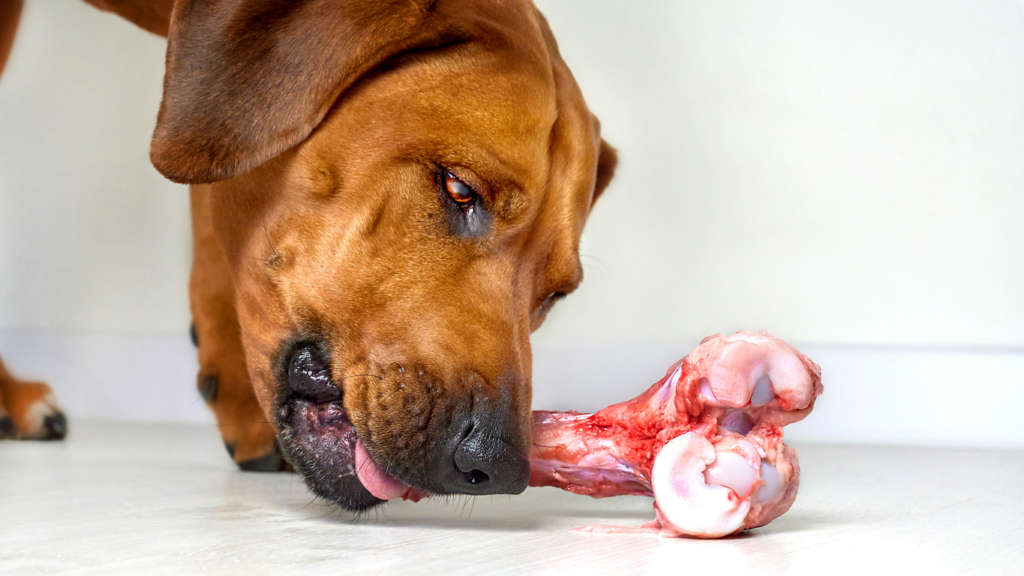

Food-Poisoning Bacteria Can Infect Humans In The Household
Safety for humans and animals is another concern. It’s no secret that undercooked meat is more likely to cause issues for humans when ingested, potentially resulting in the delightful diarrhea, vomiting, and stomach cramps of food poisoning (this is why we don’t just eat a raw chicken breast out of the fridge).
Food poisoning occurs when certain bacteria live on raw food, and the best way to kill them is by cooking your food before you eat it. This is particularly important in homes with young children or immunocompromised adults, who are more susceptible to serious or even fatal versions of this illness.
Many healthy pets (but not all) don’t experience food-poisoning symptoms, and instead become asymptomatic hosts for nasty bacteria1-3. Without getting sick, these dogs shed and spread these bacteria all over your house1-2.
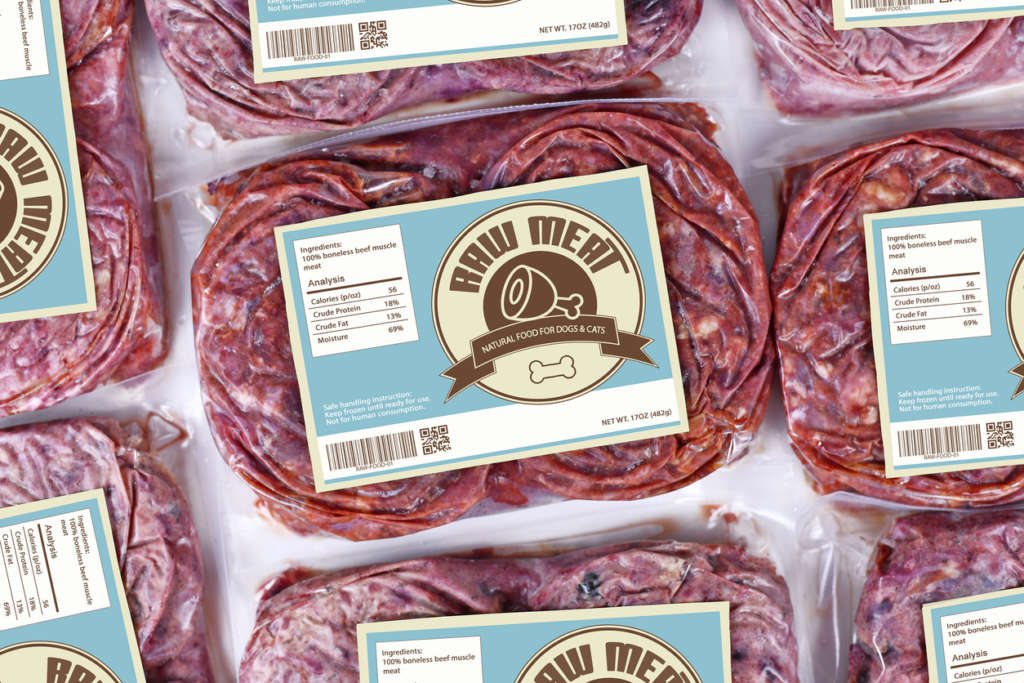

One study involving a dog fed a single meal contaminated with Salmonella (one famous kind of food poisoning bacteria), showed that they began spreading it in the environment 2 weeks later1-2. That means that everywhere your dog goes could be contaminated with Salmonella.
Additionally, a dog hosting these bacteria can still become ill from them later on if another condition or stressor shifts the balance within their body.
Potential pathogens (bacteria) of concern include:
- Salmonella1-2
- Campylobacter1-2
- Clostridium difficile1
- Clostridium perfringens1
- E. Coli1-2
- Yersinia enterocolitica1
- Listeria monocytogenes1
- Enterotoxigenic Staphylococcus aureus1
- Parasites1
This also means you need to take special care when cleaning all areas where you store, prepare, and consume food1-2. Don’t forget about the water bowl, either1! Many pets drink shortly after consuming a meal, and can transfer these bacteria to the comfy, bacteria disco-club we call a water bowl. The CDC and USDA each provide guidelines for the safe handling of raw meat.
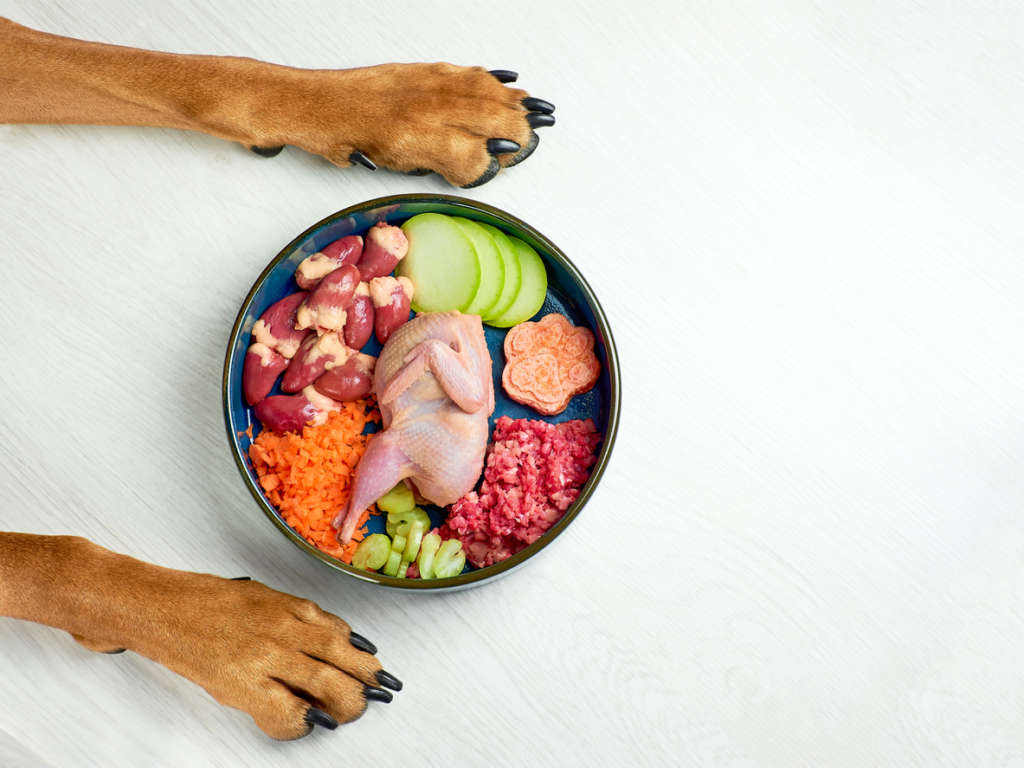

Should You Feed Your Dog Raw?
Short answer: No, most veterinarians and animal nutrition professionals do not recommend feeding raw diets to companion animals2. Below is a list of professional organizations that have published statements warning pet owners against feeding raw diets3.
- American Veterinary Medical Association
- World Small Animal Veterinary Association
- Canadian Veterinary Medical Association
- Public Health Agency of Canada
- American Animal Hospital Association
- National Association of State Public Health Veterinarians
- U.S. Centers for Disease Control and Prevention
What SHOULD You Feed Your Dog?
That depends on your individual dog’s needs and what matters to you. There are many “complete and balanced” cooked dog food products on the market. So many, in fact, that it is hard to pick just one. There’s a good chance that there are a handful of diets that will meet all of your criteria and your dog’s needs. If you feel overwhelmed by all your options, your pet’s veterinarian can help guide you further.
Related Article: How To Switch To A New Dog Food The Right Way
What If I Still Want To Make Meals Myself?
Some people feel that preparing fresh food is what works best for their dog. If this is you, home COOKED diets could be a good option. When home cooking food for dogs, we recommend involving a veterinary nutritionist to make sure the recipes are complete and balanced to meet your pet’s nutritional needs.
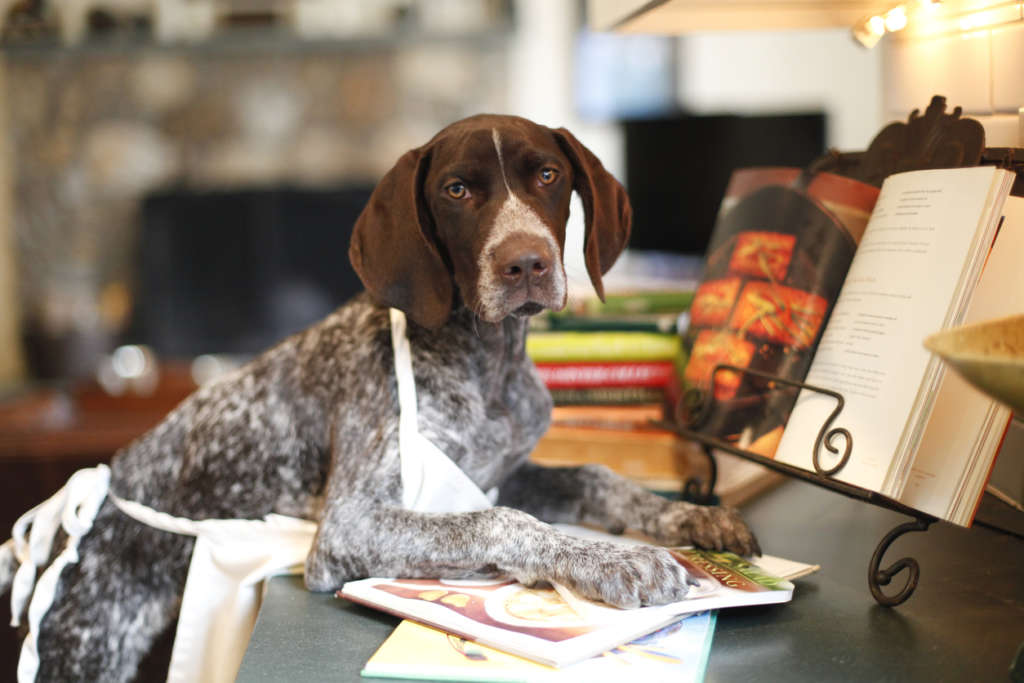

This will have to be re-evaluated and adjusted as their requirements change throughout life. Home cooking does require more of a work and time commitment, but can be achieved safely for dogs and the human household members.
If you’re still committed to feeding a raw diet, please seek the advice and support of a veterinarian who is comfortable with managing your dog’s health in light of your choices. Even if they do not recommend feeding raw, a veterinarian is a valuable source in making sure your dog’s needs are being maintained by any diet, and can help you catch any gaps in nutrition before they lead to major problems.
Colleen Ferriman, DVM, is a canine and feline health, wellness, and illness management advocate. She has a combined 10 years of experience in clinical medicine, education, and educational content development. Colleen graduated from Colorado State University as a Doctor of Veterinary Medicine, has worked as a general practitioner, and has contributed to the development of veterinary educational tools. She is also a member of the American Veterinary Medical Association and American Academy of Veterinary Pharmacology and Therapeutics.
Sources
1Weese JS: Infectious Disease Risks of Feeding Raw Diets. ACVIM 2006.
2Larsen J: Raw Food Diets for Dogs and Cats. ACVIM 2018.
3Abood SK: RVT Power! Evaluating Homemade and Raw Diets. OAVT 2019.




